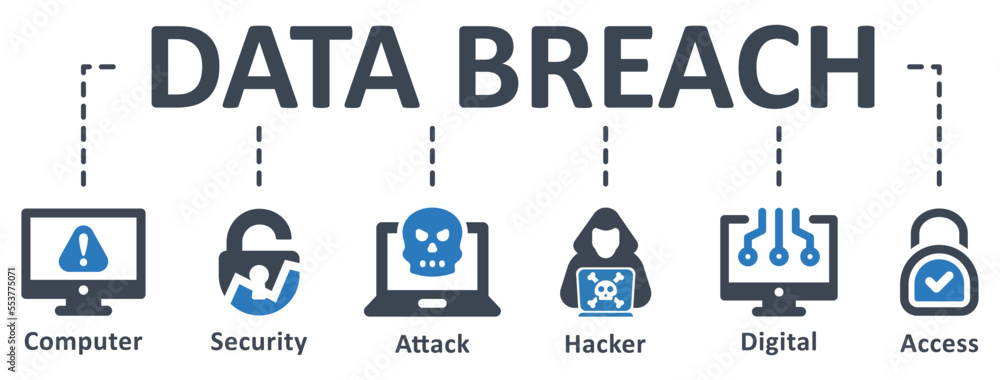In the digital age, data breaches have emerged as a grave concern for individuals and organizations alike. With rampant cyberattacks and unauthorized access to sensitive information, the pressing question arises: does encryption truly stop data breaches? This inquiry not only challenges preconceived notions about cybersecurity but also encourages us to explore the multifaceted nature of encryption and its effectiveness in thwarting these pervasive threats.
At its core, encryption is a method of encoding information so that only authorized parties can access it. This seemingly straightforward concept acts as a digital lock, transforming plaintext into ciphertext through complex algorithms. In theory, this means that even if a cybercriminal retrieves encrypted data, they would encounter a near-impenetrable barrier, rendering the information virtually useless. However, it is essential to dissect this assertion to understand the extent of encryption’s efficacy.
Encryption protocols differ significantly, not only in their complexity but also in their application. For instance, symmetric encryption utilizes a single key for both encryption and decryption, while asymmetric encryption employs a pair of keys – a public key for encryption and a private key for decryption. Each approach has its merits, yet they are not foolproof. One must consider the human element involved in managing encryption keys. A compromised key can lead to catastrophic consequences, akin to losing the keys to a physical safe.
Another layer of complexity lies in the environment in which the data resides. If sensitive data is encrypted at rest but is stored on an unsecure server, an attacker could still find a way into the system. This presents a critical challenge: encryption alone does not suffice to secure data. Comprehensive security measures must be employed to create multiple layers of protection, transforming a singular encryption effort into a robust fortress defending against breaches.
Nonetheless, the question persists: does encryption significantly mitigate the risks of data breaches? While it may not serve as an impregnable barrier, encryption undoubtedly plays an instrumental role in enhancing overall security. The very act of encrypting sensitive data can deter potential intruders. Knowing that even if they breach a system, the data they access would appear as gibberish can dissuade many malicious actors. Encryption ultimately raises the cost of an attack, compelling hackers to seek out softer targets.
It is prudent to recognize the evolving landscape of cyber threats. As technology advances, so too do the methods employed by cybercriminals. There exists a range of sophisticated attacks designed explicitly to bypass or exploit encryption methodologies. For instance, an attacker could employ a “man-in-the-middle” strategy, intercepting data at the moment it is decrypted for legitimate use, thereby obtaining unencrypted sensitive information without ever needing to breach the encryption itself.
Moreover, as databases filled with encrypted data accumulate, the potential for brute force attacks rises. With enough computational power, it is feasible for hackers to decipher encrypted data by systematically testing all possible keys—a process that can take an intolerably long time but is not insurmountable. This concern emphasizes the vital need for employing strong, contemporary encryption algorithms, as outdated methods may easily succumb to modern decryption techniques.
Equally important is the realm of user behavior; a well-designed encryption strategy cannot compensate for poor cybersecurity practices. Weak passwords, insufficient access control, and lack of employee training pose significant risks. All it takes is a single uninformed click on a phishing link to undermine extensive security measures, including encryption. Hence, a culture of security awareness must permeate every organization, aligning human behavior with technological safeguards.
While encryption constitutes a formidable tool in the arsenal against data breaches, it cannot be regarded as a standalone solution. A multi-pronged approach is required to create a multifaceted security environment. This encompasses not only state-of-the-art encryption but also secure network practices, regular security audits, and a robust incident response plan. The collaboration between technology and strategy represents the most effective strategy for minimizing risks.
In conclusion, while encryption is a crucial component in the fight against data breaches, it is not infallible. The truth is unsettling: encryption does not eliminate risks but rather diminishes them. It serves as a deterrent, raising barriers that hackers must surmount, yet it requires a comprehensive cybersecurity framework to fortify its defenses. As cyber threats continue to evolve, organizations must remain vigilant and adapt their strategies accordingly. The myth that encryption alone can halt all breaches must be dispelled; instead, it should be viewed as an integral part of a wider, more complex security paradigm. Only through a multifaceted approach can the specter of data breaches be effectively mitigated.








Leave a Comment